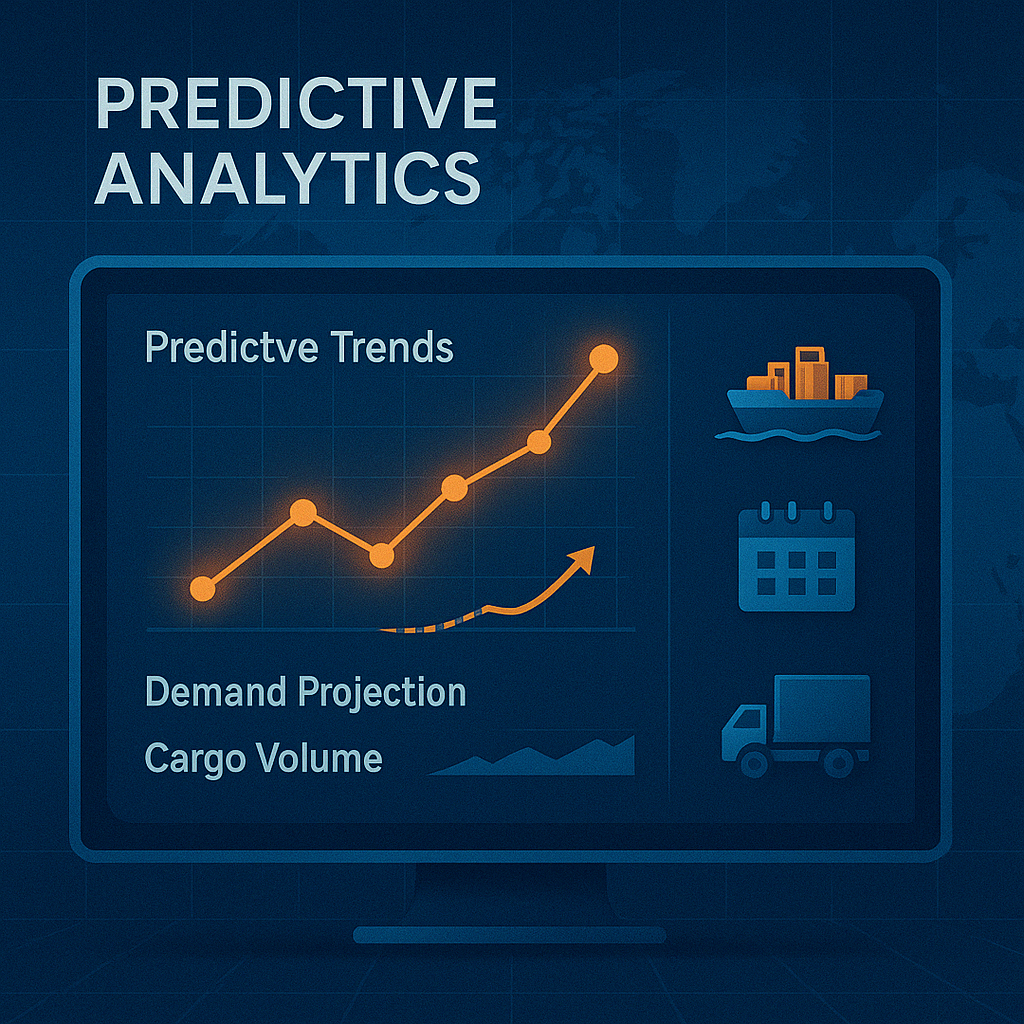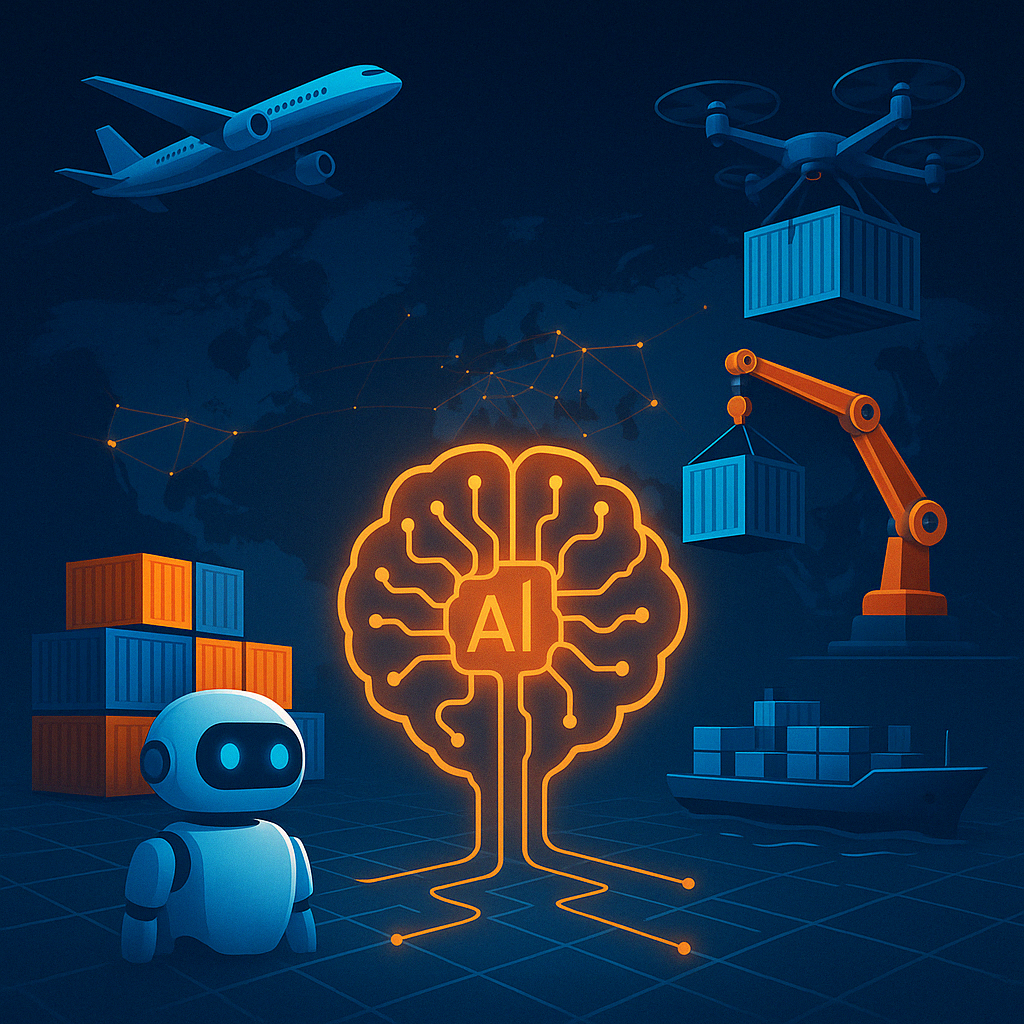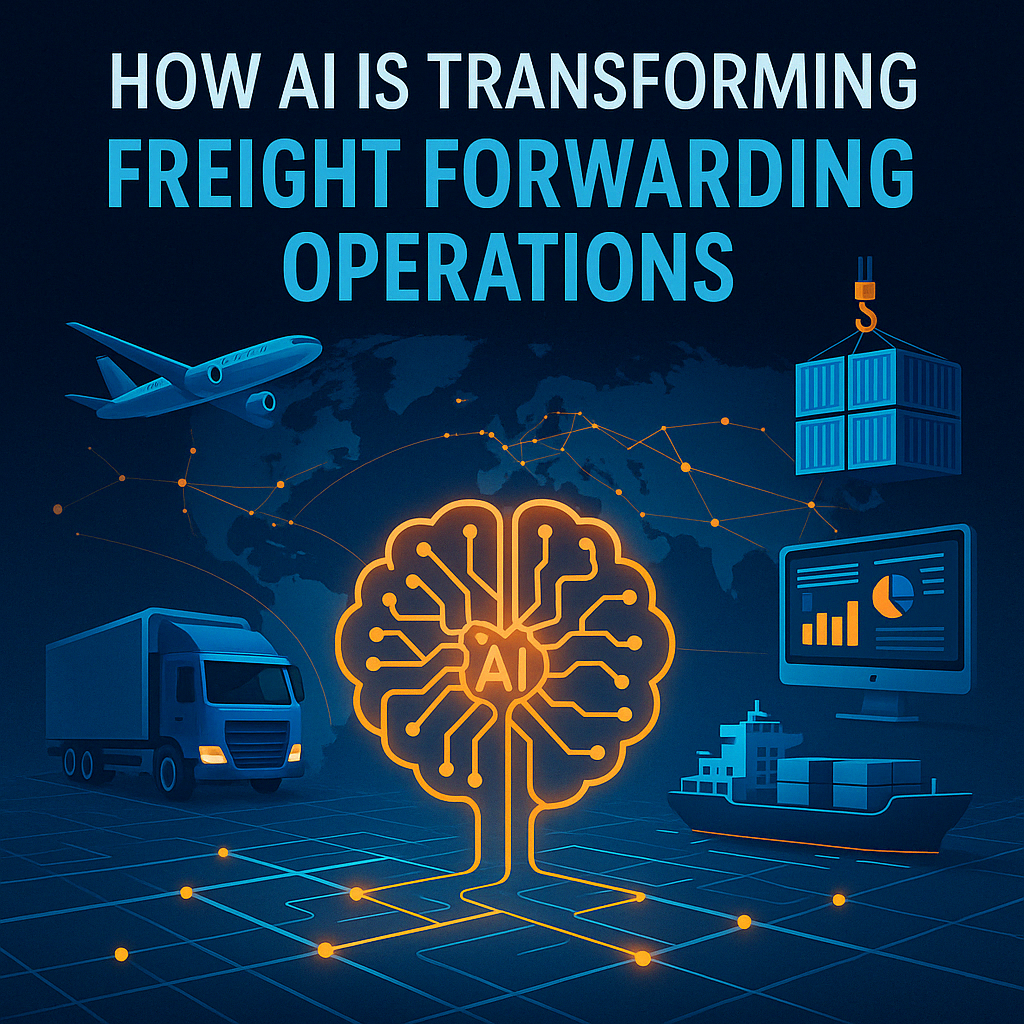How AI is Transforming Freight Forwarding Operations

🚛 What is AI in Freight Forwarding?
In freight forwarding, AI refers to software systems that can learn, predict, and make decisions—without being manually programmed for every situation.
Examples include:
- Smart route planning
- Predictive ETAs
- Automated document processing
- Risk detection
- Demand forecasting
- Chatbots and virtual assistants
AI thrives on large volumes of logistics data, and the freight industry has plenty of it—making it an ideal playground for machine learning, NLP, and automation.

💡 Key Use Cases of AI in Freight Forwarding
1. Automated Document Processing
AI can extract and validate data from documents like:
- Bills of lading
- Invoices
- Packing lists
- Customs declarations
This eliminates the need for manual data entry, reducing errors and speeding up processing.
📉 Result: Lower admin overhead and faster cycle times.
2. Route & Delivery Optimization
AI-powered systems can calculate the most efficient shipping routes by analyzing:
- Real-time traffic
- Port congestion
- Fuel prices
- Weather conditions
📦 Result: Faster deliveries and reduced transportation costs.
3. Predictive Analytics for Demand & Capacity
By analyzing historical data, AI tools can forecast:
- Shipping volumes
- Equipment availability
- Pricing fluctuations
📈 Result: Smarter planning and less wasted space or delays.
4. Risk Management & Exception Handling
AI models can flag unusual patterns—like documentation inconsistencies, customs issues, or fraud risks—before they become problems.
⚠️ Result: More proactive operations and better compliance.
5. Customer Experience & Chatbots
AI chatbots can respond instantly to customer inquiries about:
- Shipment status
- Quote requests
- Pickup scheduling
🤝 Result: 24/7 support without needing more human agents.

🧠 How AI Works in Freight Platforms
Modern freight software integrates AI through:
- Machine learning algorithms for pattern recognition
- Natural language processing (NLP) for reading unstructured text
- Computer vision for interpreting scanned documents or container images
- Robotic Process Automation (RPA) to automate repetitive workflows
Platforms with embedded AI (like Linbis and others) bring these tools into a single dashboard, helping freight teams make smarter decisions, faster.
📌 Benefits of AI for Freight Forwarders
Benefit | Impact |
✅ Time Savings | Faster processing across tasks |
📊 Improved Accuracy | Fewer manual errors and better data |
🚀 Operational Efficiency | Smarter workflows, better resource allocation |
💬 Enhanced Customer Service | Real-time updates and faster responses |
🔄 Scalability | Handle more shipments without growing headcount |

🌍 Final Thoughts: AI Is the Future of Freight Forwarding
AI isn’t replacing freight forwarders—it’s empowering them. Companies that adopt AI-powered solutions now will be more agile, scalable, and competitive in the years to come.
The journey to AI adoption starts small: automate document handling, use predictive ETAs, test chatbots. Over time, these tools can transform your freight operations from reactive to proactive.
